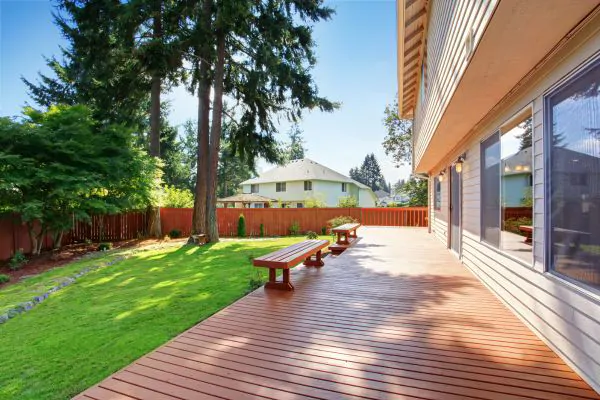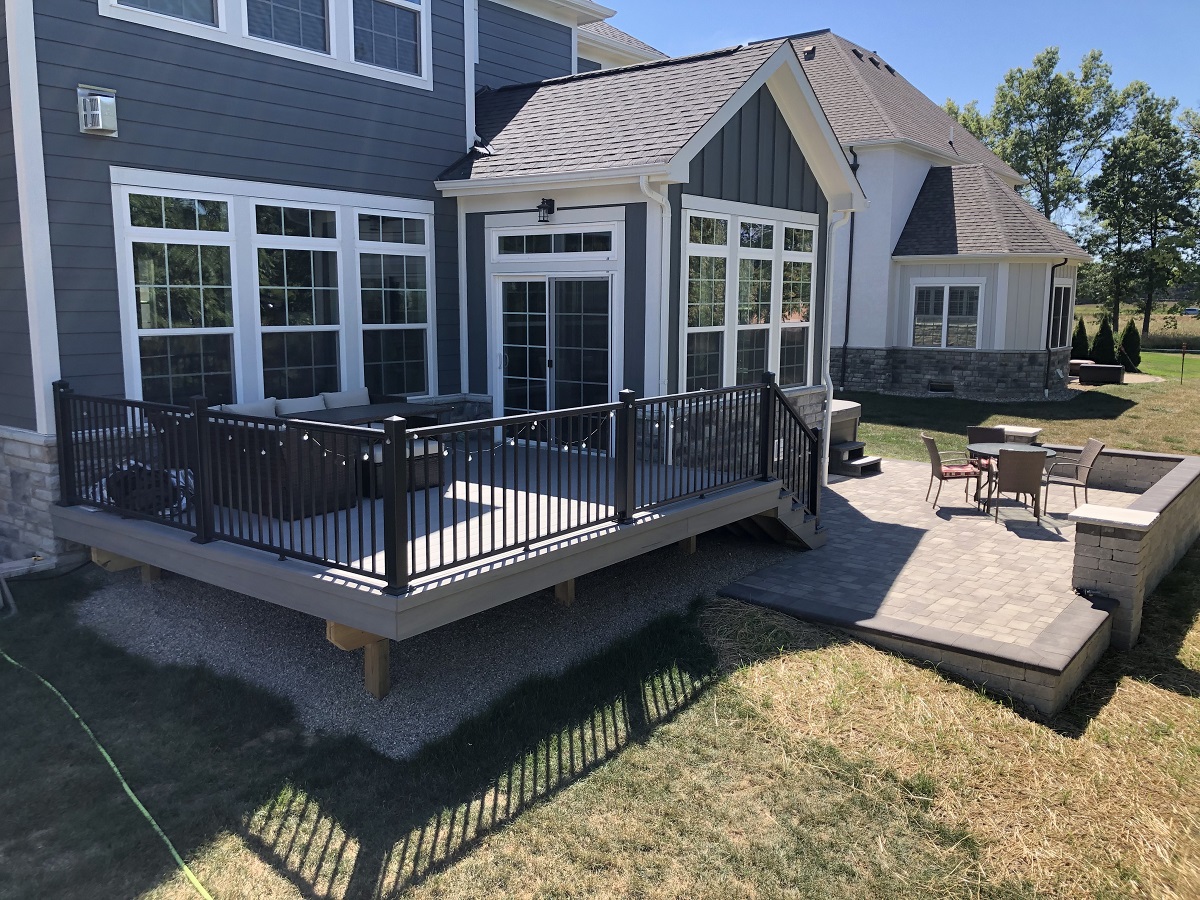Pool Deck Builders Austin Near Me Share Design Tips to Optimize Small Spaces
Pool Deck Builders Austin Near Me Share Design Tips to Optimize Small Spaces
Blog Article
A Step-by-Step Strategy to Efficient Deck Setup for Homeowners
When it comes to mounting a deck, cautious preparation is essential. Begin by evaluating your area and setting clear goals. Recognizing just how to design your deck layout can make all the distinction in optimizing your outside location.
Assessing Your Room and Establishing Goals
Just how do you visualize your optimal deck? Take dimensions to comprehend just how much space you've got to work with. Believe concerning how you desire to utilize the deck: will it be a comfy resort, a celebration spot for good friends, or a place for household dishes?
Following, established certain goals. Prioritize functionality, but don't neglect visual appeals. By evaluating your space and setting clear goals, you'll lay the structure for a deck that fulfills your demands flawlessly.
Selecting the Right Products
With your goals and room described, it's time to pick the appropriate products for your deck. Consider the climate in your area. If you reside in a region with hefty rainfall or moisture, choose materials immune to dampness, like composite outdoor decking or pressure-treated timber. If you favor an all-natural appearance, woods like cedar and redwood supply beauty and durability but might need even more maintenance.
Next, assume concerning your budget plan. Compound materials can be pricier ahead of time however frequently last longer and need much less upkeep. If you're on a tighter spending plan, treated lumber is cost effective and extensively available, yet it may call for regular upkeep.
Last but not least, don't forget visual appeals. Pick shades and appearances that enhance your home and landscape. By meticulously selecting your products based on these aspects, you'll guarantee your deck not only meets your requirements however likewise enhances your outside space.
Designing Your Deck Format
Creating a well-balanced deck format is important for optimizing both functionality and pleasure. Begin by taking into consideration how you intend to make use of the room.
Measure your yard to guarantee your deck fits harmoniously within the landscape. Consider flow and access; it's necessary to develop paths that make movement very easy. If you're including furniture, sketch a layout that suits seating, tables, and any kind of additional attributes like planters or a fire pit.
Placing your deck to catch sunlight throughout cooler months can improve its usability. With mindful planning, your deck layout will certainly not only offer your needs however also raise your outdoor experience.
Getting Required Permits
Prior to you start constructing your deck, it is essential to examine local laws and obtain the essential licenses. Each area has certain guidelines controling deck building and construction, including dimension, height, and products - trex deck builders austin texas near me. Start by visiting your neighborhood building division or their website to collect information on what's needed
You'll likely require to fill in an authorization application and provide in-depth plans for your deck, consisting of dimensions and materials. Do not forget to inspect if any kind of zoning laws or house owner association guidelines put on your residential property, as they might enforce added restrictions.
When you send your application, the evaluation procedure can take time, so plan in advance. If your task does not meet local codes, you may need to change your plans, which can delay your installation. By protecting the needed authorizations first, you guarantee that your deck job remains on track and adhere to all guidelines.
Preparing the Ground and Structure
Preparing the ground and foundation for your deck is necessary for ensuring security and longevity. Start by choosing the right place-- preferably, a level area that drains pipes well. Clear the site of any debris, plants, or rocks. Next off, mark the rundown of your deck making use of stakes and string to imagine the area.
As soon as you've defined the area, dig to get rid of the topsoil, getting to a depth of about 6 inches. This helps prevent dampness build-up and rot. If you're utilizing concrete footings, dig holes where your posts will certainly go, at the very least 12 inches deep to get to steady soil.
Consider including crushed rock to the bottom of these holes for water drainage. Condense the soil to create a strong base, and inspect for level with a lengthy board or degree device. By taking these actions, you'll establish a strong foundation that sustains your deck for several years to find.
Building the Deck Framework

Once the frame is in place, add joists, spaced evenly for proper support. You can make use of joist wall mounts for a secure fit. Do not neglect to ascertain find more information that everything is degree my blog and square as you go. This framework is crucial for the durability of your deck, so take your time and validate each part is effectively set up. With your deck structure built, you're one step better to appreciating your new outdoor sanctuary!
Adding Ending Up Touches and Upkeep Tips
Now that your deck is constructed, it's time to concentrate on the finishing touches and upkeep. Selecting the right tarnish can enhance its appearance, while routine cleansing keeps it looking fresh. Do not fail to remember to follow a seasonal upkeep checklist to assure your deck stays in fantastic form year-round.
Choosing Deck Discoloration Options
Exactly how do you choose the ideal stain for your deck? Beginning by assessing the sort of wood. Different timbers absorb spots differently, so examine compatibility. Next, consider the finish you desire. Transparent spots showcase the timber's natural appeal, while semi-transparent options include color without totally hiding the grain. Strong stains provide optimal coverage, ideal for used or aged wood.

Regular Cleaning Methods

Seasonal Upkeep Checklist
A properly maintained deck can transform your exterior area into a magnificent resort, so it's important to visit this website comply with a seasonal upkeep checklist. Beginning each springtime by inspecting for any kind of damage, such as loosened boards or rusting bolts. Tidy the surface extensively, eliminating dust and particles. When dry, use a protective sealant to defend against wetness and UV rays.
In summer season, look for mold or mildew and address it without delay. Keep the deck devoid of mess and check for indications of wear.
As fall approaches, clear leaves and particles to avoid dampness buildup. Tighten any type of loosened screws.
Finally, during wintertime, validate that snow and ice are cleared to stop architectural damages. Normal attention to these jobs maintains your deck looking fantastic year-round!
Often Asked Concerns
How much time Does a Typical Deck Installment Take?
A normal deck setup can take anywhere from a few days to a number of weeks, depending upon size, materials, and climate. You'll want to plan as necessary to ensure every little thing goes efficiently and efficiently.
Can I Install a Deck on Irregular Ground?
Yes, you can install a deck on uneven ground. You'll require to level the area, usage adjustable blog post sustains, or consider constructing a multi-level deck to accommodate the incline and guarantee security.
What Tools Do I Required for Deck Installation?
You'll need a couple of vital tools for deck setup: a measuring tape, degree, saw, drill, hammer, and screws. Don't fail to remember safety equipment like handwear covers and goggles to maintain yourself safeguarded while functioning.
How Do I Guarantee My Deck Is Safe and Sturdy?
To guarantee your deck's risk-free and tough, consistently check for loosened boards, secure railings, and correct support. Usage top quality materials, adhere to building codes, and take into consideration professional assessments to keep its stability with time.
What Are Common Errors to Stay Clear Of During Installation?
When setting up a deck, avoid typical errors like inappropriate dimensions, ignoring authorizations, using low-quality materials, or missing the progressing process. These oversights can jeopardize safety and toughness, so pay focus to information throughout the job.
Report this page